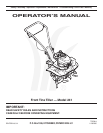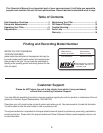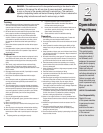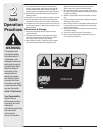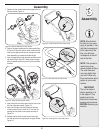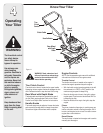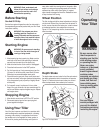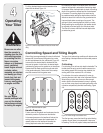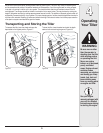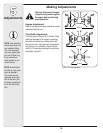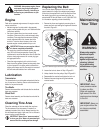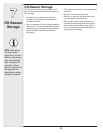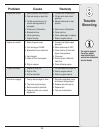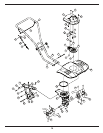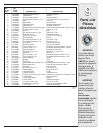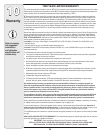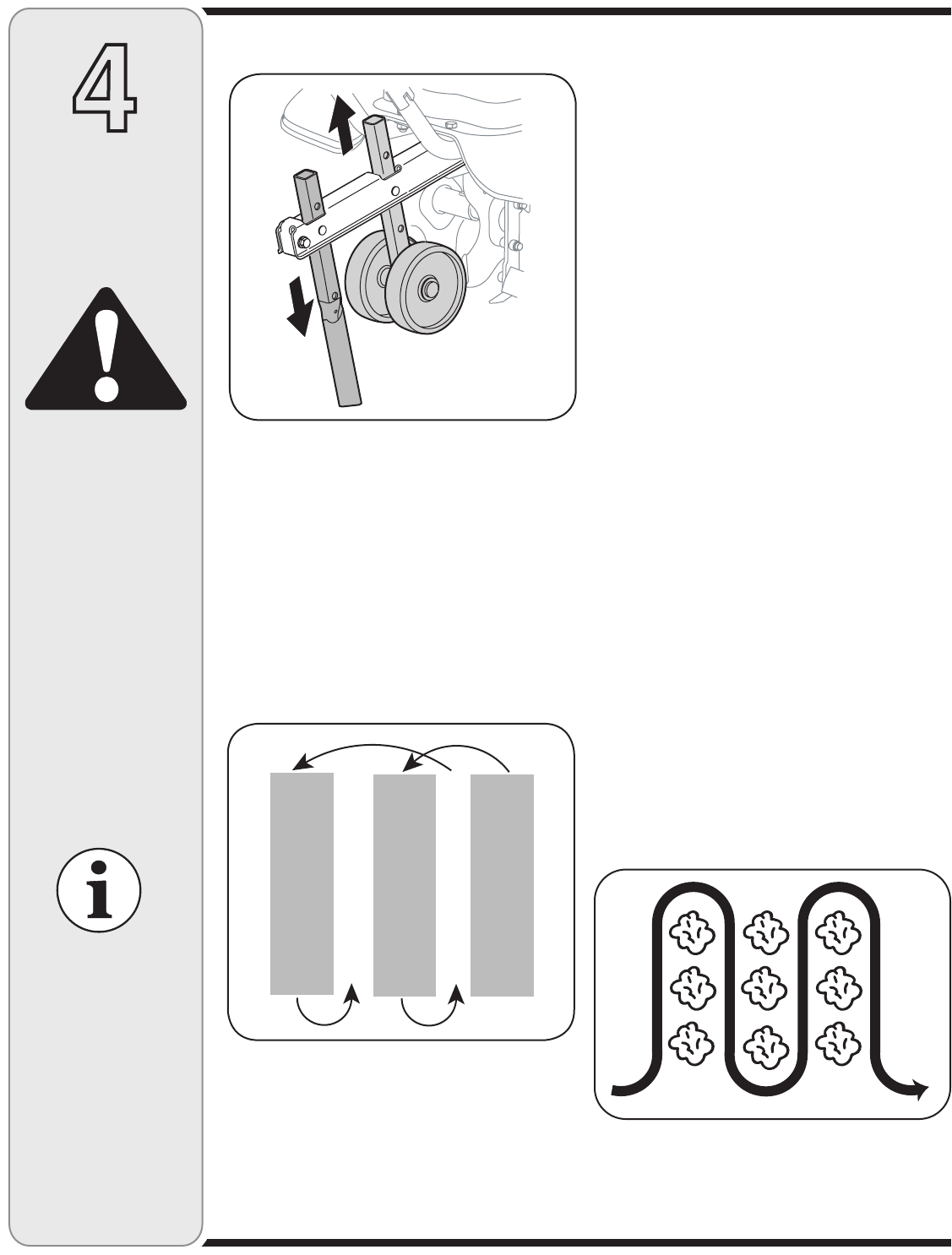
8
The type of soil and working conditions will determine the
actual setting of the depth stake and the handle pressure
required.
Cultivating
For cultivating, a two to three inch depth is desirable. The
throttle should be set to control forward movement to a
slow walking speed. With the outer tines installed, the
working width of the machine is 22 or 24 inches.
For cultivation, this may be reduced to 13 inches by
removing the outer tines, refer to the Adjustment Section.
When laying out plant rows, be sure to allow enough
width to permit cultivation between the rows. In growing
corn or similar crops, check-row planting will permit cross
cultivation and practically eliminate hand hoeing, Figure
4-6.
The tiller has many uses other than tilling and cultivating
a garden. One of these is the preparation of lawn area
for seeding. The tiller will prepare a deep seed bed which
When tilling, leave approximately 8 inches of untilled soil
between the first and second tilling paths, then make
the third path between the first and second, Figure 4-5.
In some soils, the desired depth is obtained the first
time over the garden. In other soils, the desired depth
is obtained by going over the garden two or three times.
Passes should be made across the length and width
of the garden alternately. Rocks which are turned up
should be removed from the garden area.
Handle Pressure
Further control of tilling depth and travel speed can be
obtained by variation of pressure on the handles.
A downward pressure on the handles will reduce the
working depth and increase the forward speed. An
upward pressure on the handles will increase the
working depth and reduce the forward speed.
4
Operating
Your Tiller
Figure 4-6: Allow enough area between rows.
4 5 2 3 1
Figure 4-5: Recommended tiller paths.
WARNING
Be sure no one other
than the operator is
standing near the tiller
while starting engine
or operating the unit.
Never run engine
indoors or in enclosed,
poorly ventilated
areas. Engine exhaust
contains carbon
monoxide, an odorless
and deadly gas. Keep
hands, feet, hair and
loose clothing away
from any moving parts
on engine and tiller.
See your engine
manual packaged with
your unit for detailed
instructions pertaining
to starting the engine.
For tilling, the depth stake must be lowered and the
wheel must be raised, Figure 4-4.
Figure 4-4: Lower the depth stake and raise the wheel when
tilling.
By increasing the depth of the depth stake, the forward
speed of the machine is reduced and the working depth
is increased. When the depth stake is raised, the working
depth of the machine is reduced and the forward speed
is increased. The working depth of the machine may
be predetermined by setting the depth stake so that the
wheels are about four inches from the ground when the
tines and depth stake are resting on the ground. This
setting will permit a working depth of about four inches.
When presetting the working depth, the handles should
be adjusted so the hand grips are a little above waist.
The tiller will be lower when the tines and depth stake
penetrate the ground.
Controlling Speed and Tilling Depth



